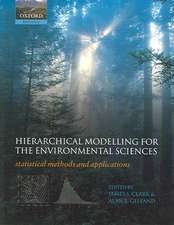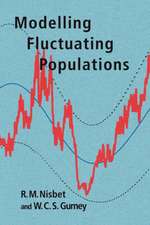Fungal Ecology
Editat de Neville J. Dixen Limba Engleză Paperback – 3 oct 2013
| Toate formatele și edițiile | Preț | Express |
|---|---|---|
| Paperback (1) | 704.54 lei 6-8 săpt. | |
| SPRINGER NETHERLANDS – 3 oct 2013 | 704.54 lei 6-8 săpt. | |
| Hardback (1) | 593.27 lei 6-8 săpt. | |
| – | 593.27 lei 6-8 săpt. |
Preț: 704.54 lei
Preț vechi: 828.87 lei
-15% Nou
Puncte Express: 1057
Preț estimativ în valută:
134.93€ • 139.02$ • 113.03£
134.93€ • 139.02$ • 113.03£
Carte tipărită la comandă
Livrare economică 25 februarie-11 martie
Preluare comenzi: 021 569.72.76
Specificații
ISBN-13: 9789401042994
ISBN-10: 9401042993
Pagini: 560
Ilustrații: IX, 549 p.
Dimensiuni: 155 x 235 x 29 mm
Greutate: 0.78 kg
Ediția:1995
Editura: SPRINGER NETHERLANDS
Colecția Springer
Locul publicării:Dordrecht, Netherlands
ISBN-10: 9401042993
Pagini: 560
Ilustrații: IX, 549 p.
Dimensiuni: 155 x 235 x 29 mm
Greutate: 0.78 kg
Ediția:1995
Editura: SPRINGER NETHERLANDS
Colecția Springer
Locul publicării:Dordrecht, Netherlands
Public țintă
ResearchCuprins
1 Introduction.- 1.1 Life strategies of fungi.- 2 The mycelium and substrates for growth.- 2.1 The mycelium.- 2.2 Spores and other mycelial-derived structures.- 2.3 Substrata and substrates for saprotrophs.- 3 Structure of fungal communities.- 3.1 Introduction.- 3.2 Development of fungal communities.- 3.3 Successions.- 4 Colonization and decomposition of leaves.- 4.1 Deposition.- 4.2 Colonization of living leaves.- 4.3 Factors affecting the development of fungal communities on leaf surfaces.- 4.4 Fungal successions in leaf litter.- 4.5 Decomposition of leaf litter.- 5 Development of fungal communities on herbaceous stems and grasses.- 5.1 Distribution of fungal populations on Dactylis glomerata.- 5.2 Interpretation of distribution patterns.- 5.3 Distribution patterns on other plants.- 6 Colonization and decay of wood.- 6.1 Wood as a resource.- 6.2 Colonization of woody tissues.- 6.3 Types of wood rot.- 6.4 Water relations.- 7 Fungi of soil and rhizosphere.- 7.1 Techniques for studying fungi of soil and roots.- 7.2 Fungal distribution in soil.- 7.3 Fungal activity in soil.- 7.4 The rhizosphere and root colonization.- 8 Coprophilous fungi.- 8.1 Succession of coprophilous fungi.- 8.2 Comparison of the fungal flora of different animal dungs.- 8.3 Autecological studies.- 9 Aquatic fungi.- 9.1 Introduction.- 9.2 Freshwater fungi.- 9.3 Marine fungi.- 10 Nematophagous fungi.- 10.1 Techniques for studying nematophagous fungi.- 10.2 Distribution and abundance.- 10.3 Ecological characteristics.- 10.4 Biological control of pathogenic nematodes.- 11 Phoenicoid fungi.- 11.1 Chemical, physical and biological changes in soil after burning.- 11.2 Ecological characteristics and phenology.- 11.3 Experimental studies.- 11.4 Fruiting of phoenicoid fungi following volcanic eruptions.- 12 Fungi of extreme environments.- 12.1 Thermotolerant and psychrotolerant fungi.- 12.2 Xerotolerant and osmotolerant fungi.- 13 Terrestrial macrofungi.- 13.1 Introduction.- 13.2 Wood-decay macrofungi.- 13.3 Litter decomposers.- 13.4 Mycorrhizal macrofungi.- References.















